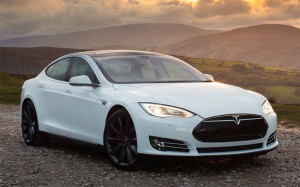With essentially the press of a button, thousands of Tesla owners took a dramatic technological leap forward recently as the company sent out its latest vehicle update, which included autopilot for some owners.
Tesla’s over-the-air update put the company’s vehicles at the front of the self-driving pack. The Palo Alto, California-based EV make joined Mercedes, Volvo and Audi in the market with vehicles that will remain in a lane and maintain a safe distance from the vehicle in front of it.
The latest software upgrade from the maker also allows the vehicle to find a parking space and parallel park itself – technology available in many vehicles – however, Tesla’s program has a significant upgrade compared with the others: it can change lanes.
Drivers use the turn signal to activate the lane changing program, which is called auto lane change. By using the indicator the system asks the driver to check the car’s blind spots, then ultimately it will check to see if the lane is clear and make the move.
If there is an object in the lane, it won’t attempt the move.
(Tesla owners getting autopilot now. For more, Click Here.)
There is a bit of a downside to the system: it’s the beta version which requires drivers to touch the steering wheel: not all the time, but on a regular basis.
“We’re being especially cautious at this stage so we’re advising drivers to keep their hands on the wheel just in case,” said Elon Musk, the company’s founder, during the unveiling. “Over time there will not be a need to have your hands on the wheel.”
He said over time everyone’s vision of autonomy in which the driver gets in the vehicle, orders up a destination and doesn’t need to touch the wheel at all is coming, likely in the next three to five years. Musk notes that federal regulators are still scrambling to keep up with the pace of technological change in vehicles.
(GM testing fully autonomous Chevy Volts at Detroit Tech Center. Click Here for more.)
“Regulators need to see clear evidence that the reliability is there,” says Musk. “It works almost to the point where you can take your hands off,” Musk told Wired magazine, “but we won’t say that. Almost.”
The current system, which would need more sensors to offer full autonomy, is essentially for highway use only. It won’t function at speeds lower than 18 mph. Requiring drivers to touch the wheel on the regular basis is also part of a safeguard that ensures drivers don’t zone out or even fall asleep.
If the vehicle senses the driver is asleep, it will beep at the driver. If that doesn’t work, a message will flash warning the driver to take hold of the steering wheel. If nothing happens at that point, the car will eventually slow to a stop and put the hazard lights on. Audi and Mercedes-Benz employ similar systems.
(To see more about Toyota developing its autonomous “highway teammate,” Click Here.)
Perhaps the most important part of the new system is that all Teslas are connected and sharing information meaning that the systems will improve over time. The downside? If you own a Tesla built before September 2014, the system isn’t available for your vehicle.

